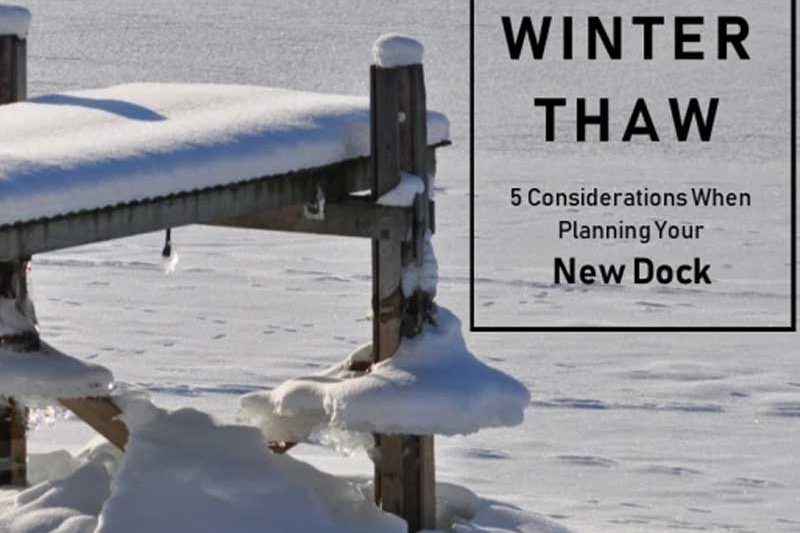While the snow melts its the perfect time to start thinking about your dock plans. There are many considerations to weigh:
- BUDGET
- LAYOUT
- STYLE
- DEPTH
- ACCESSORIES
1. BUDGET: Using your tax refund to get the basic job done? Going the whole mile and building the dock of your dreams that will last a lifetime? Something in between? Budgeting for your dock can determine everything. A dock can cost you under $1000 and up to $30k! If you are a DIY-er or if you don’t want to touch the thing will all affect your budget.
2. LAYOUT: Determine what you want your dock to accomplish. How many boats would you like to moor? Do you have a boat lift to accommodate? Do you want space for fishing and sitting? Is your dock for hanging out or more to park your toys? The shape can be determined by what your needs are for the dock. The natural surroundings may limit or determine the layout of your dock. For example, if you have a sharp drop off, a river with current, or a tide, you will be looking at very different styles of dock. Also keep in mind that some bodies of water restrict how far out your dock can go. Others require a permit.
3. STYLE: There are different types of docks for different applications. There are plastic docks that you can drive your boat on; there are swimming rafts; there are aluminum docks that roll; there are modular docks; floating docks, stationary docks; wooden docks. So many options, it could make your head spin. Generally, floating docks can be more expensive and are better for deeper water. Plastic components can deteriorate with UV radiation, so you may be looking at the replacement factor. Some docks are in waters that never freeze. This allows for a stationary dock since winterizing docks is always a good idea for freezing waters. Ice expands and is the primary cause of dock damage. If you have need to move your dock due to the changing seasons or other factors, a rolling dock may be the ticket. Modular docks make assembly and re-configuring a flexible task.
4. DEPTH: Your water depth is a huge factor when planning your dock. You need supports that will accommodate your water depth and the type of soil you have. If water depths are close to 5-6ft at the end of your dock, this is an average situation for a rolling dock. Floating docks are typical for deeper waters and for waters that change frequently. If waters change frequently, you will want to consider how to make your life easy. The traditional way to adjust the dock height is by getting in the water, and lifting or dropping it manually, then tightening the supports. There have been many technological advancements to make life easier, and often times you pay for those advancements! Before contacting someone about your new dock, have an idea of your water depth.
5. ACCESSORIES: When it comes to the final touches, details are everything. The decking you choose is what the little kids’ toes will feel on the dock. Ladders, ramps, and bumpers will affect your every interaction with the dock. Thinking ahead can prepare you to get the job done right the first time. Consider mooring your boat – do you have the fenders you need to protect your boat from the dock? Consider your decking – how long are you hoping for it to last, how hot will it get, how slippery is it, even how does it hide the bird poop? Consider elderly folk walking on the dock – is it easy to walk on, does it give when you step on it, does it wobble, does it need stairs or a ramp? Great accessories usually add a lot to the experience of a dock and usually doesn’t cost much more.
As the ice thaws, consider these things when dock shopping. Enjoy!



